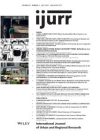This article provides a particular perspective on change in the spatial structure and organization of the German advertising industry, i.e. considering it as based on a fundamental innovation process. This in turn involves integrating this change into the wider debates on territory and innovation which have strongly influenced regional science over the last 20 years, focusing on two opposing views of the relation between actors and their environment: the GREMI approach of innovative milieus and Storper and Walker’s ‘window of locational opportunity’ argument. After a brief outline of this theoretical framework, the innovation process within German advertising is traced, starting from the success story of one pioneer agency and examining its impact on the national landscape of advertising agencies and on the pattern of competition between them. It is concluded that in conceptualizing the spatial dimension of innovation in business services, it is vital to take the labour market of professionals into account.
Details
Written by:
JOACHIM THIEL
Digital Object Identifier (DOI)
10.1111/j.1468-2427.2005.00613.x
About DOI
Read full article as PDF
Read full article as HTML
See the references for this article
